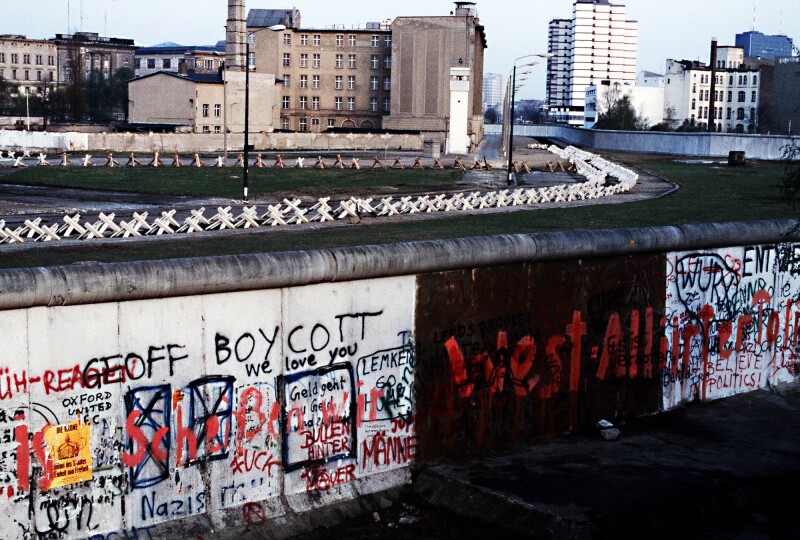The Berlin Wall remains one of the most powerful—and literal—symbols of the enduring impacts of political divide. In 1989, almost three decades after the partition was erected, millions around the world watched on live TV as Berliners from both “sides” celebrated its fall.
This October, to mark the 29th anniversary of the wall’s demolition, organizers of a cultural festival known as Berliner Festspiele plan to resurrect the divider in downtown Berlin as part of an immersive art installation titled “DAU Freiheit” (DAU Freedom).
According to Phenomen Films, the group working with Berliner Festspiele to produce the political art project, the concept of the installation is to “create a self-contained city” surrounded by 12-foot-tall walls. The simulatory blockade will encompass a pedestrian stretch between Bebelplatz and Alte Kommandantur, both significant landmarks in Berlin’s Mitte district.
Throughout the fully-enclosed compound, various aspects of life in the formerly polarized German capital will be reflected in an attempt to emulate the environment of a totalitarian society, including viewing platforms from which visitors can peer out toward the other side of the enclosure (a nod to Cold War watchtowers used to peek into East Berlin).

DAU Freedom will feature the world premiere of “The Institute,” a controversial film by Russian-born artist Ilya Khrzhanovsky.
Courtesy of © Orlova
Within the pseudo-urban quarter, the project’s organizers are focused on “creating an experience of traveling to a foreign country and losing one’s sense of freedom,” a statement from Berliner Festspiele says. Organizers hope the immersive exhibit will offer visitors the opportunity to engage in “political and social debates on freedom, totalitarianism, surveillance, coexistence, and national identity.” Visitors will exchange their cell phones for a device that will provide an “experiential” tour of exhibits, including live readings, concerts, and film screenings. Russian-born artist Ilya Khrzhanovsky’s film, The Institute, which depicts the extraordinary living conditions within a secret Soviet research institution, will have its world premiere as part of the DAU display in Berlin. Special performances from prominent artists such as Marina Abramović and Carsten Höller are also being planned as part of the project. Tours throughout the space will be individualized based on curation by each device. No two experiences will be identical, but all will contain elements of surprise.

A photo of the Berlin Wall in 1983. The partition separated Communist-controlled East Germany from West Berlin.
Courtesy of Shutterstock
To enter the political art installation, which will be accessible 24 hours a day, visitors must apply for “visas” on DAU’s website. Different levels of access to the walled installation will be granted depending on visa types, which include “visitor,” “day,” “residence,” and “diplomatic” passes. Visitors who spontaneously happen upon the Mitte district installation can apply for a visa at the project’s issuing office, which will be located in an underground parking garage below the Bebelplatz—one of the sites of the Nazis’ infamous 1933 book burning ceremonies. The interactive “DAU Freedom” installation will line downtown Berlin’s Unter den Linden boulevard near the famous State Opera building and the Kronprinzenpalais (the Crown Prince’s Palace) beginning October 12.
After four weeks, the public will be invited to act as “wall woodpeckers” and take part in the structure’s symbolic demolition on November 9—exactly 29 years after the original fall of the wall.

The Gedenkstätte Berliner Mauer (Berlin Wall Memorial) commemorates the lives lost as a result of the division of Berlin by the wall.
Photo by struvictory/Shutterstock
>>Next: 10 Border Walls That Artists Have Turned Into Powerful Protests











